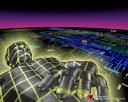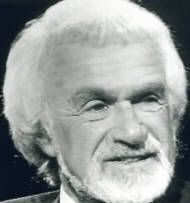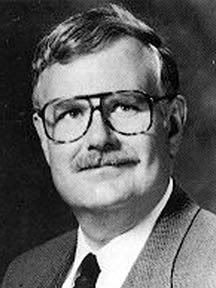Asteroids Less Alarming Now?
Asteroid Danger Scale Revised to Be Less Alarming
By John Johnson Times Staff Writer
 Astronomers have changed the controversial Torino Scale, which categorizes the danger of an asteroid hitting Earth, to avoid needlessly scaring the public.
Astronomers have changed the controversial Torino Scale, which categorizes the danger of an asteroid hitting Earth, to avoid needlessly scaring the public.
The new scale still ranks the danger level from 0 to 10, with 10 representing certain global catastrophe. The key change is to the description of lower-ranking threats.
In the original scale, adopted in 1999 by the International Astronomical Union at a meeting in Torino, Italy, collision threats from 2 to 4 were described as "meriting concern."
"The idea was to create a simple system conveying clear, consistent information" about asteroids or comets that appeared to be heading for Earth, said Richard Binzel, an MIT professor, who created the scale.
But even that modest wording has at times sparked more public alarm than astronomers expected.
Frightening people into concluding that doomsday was approaching was "the opposite of what was intended," Binzel said.
The revised scale says that so-called near-Earth objects with rankings from 2 to 4 should merit "attention by astronomers," but not necessarily by the public.
The revisions also include language emphasizing that detailed study of a newly discovered object will almost always reduce the threat level to 0, meaning no danger.
The highest ranking ever assigned to an asteroid was 4, last December, when an asteroid was given a 2% chance of striking the Earth in 2029. After detailed tracking of the asteroid's orbit, the object was reclassified to 0.
The "chance of something hitting the Earth and having a major impact is very unlikely," said Binzel. "But although unlikely, it is still not impossible."
By John Johnson Times Staff Writer
 Astronomers have changed the controversial Torino Scale, which categorizes the danger of an asteroid hitting Earth, to avoid needlessly scaring the public.
Astronomers have changed the controversial Torino Scale, which categorizes the danger of an asteroid hitting Earth, to avoid needlessly scaring the public. The new scale still ranks the danger level from 0 to 10, with 10 representing certain global catastrophe. The key change is to the description of lower-ranking threats.
In the original scale, adopted in 1999 by the International Astronomical Union at a meeting in Torino, Italy, collision threats from 2 to 4 were described as "meriting concern."
"The idea was to create a simple system conveying clear, consistent information" about asteroids or comets that appeared to be heading for Earth, said Richard Binzel, an MIT professor, who created the scale.
But even that modest wording has at times sparked more public alarm than astronomers expected.
Frightening people into concluding that doomsday was approaching was "the opposite of what was intended," Binzel said.
The revised scale says that so-called near-Earth objects with rankings from 2 to 4 should merit "attention by astronomers," but not necessarily by the public.
The revisions also include language emphasizing that detailed study of a newly discovered object will almost always reduce the threat level to 0, meaning no danger.
The highest ranking ever assigned to an asteroid was 4, last December, when an asteroid was given a 2% chance of striking the Earth in 2029. After detailed tracking of the asteroid's orbit, the object was reclassified to 0.
The "chance of something hitting the Earth and having a major impact is very unlikely," said Binzel. "But although unlikely, it is still not impossible."

















<< Home